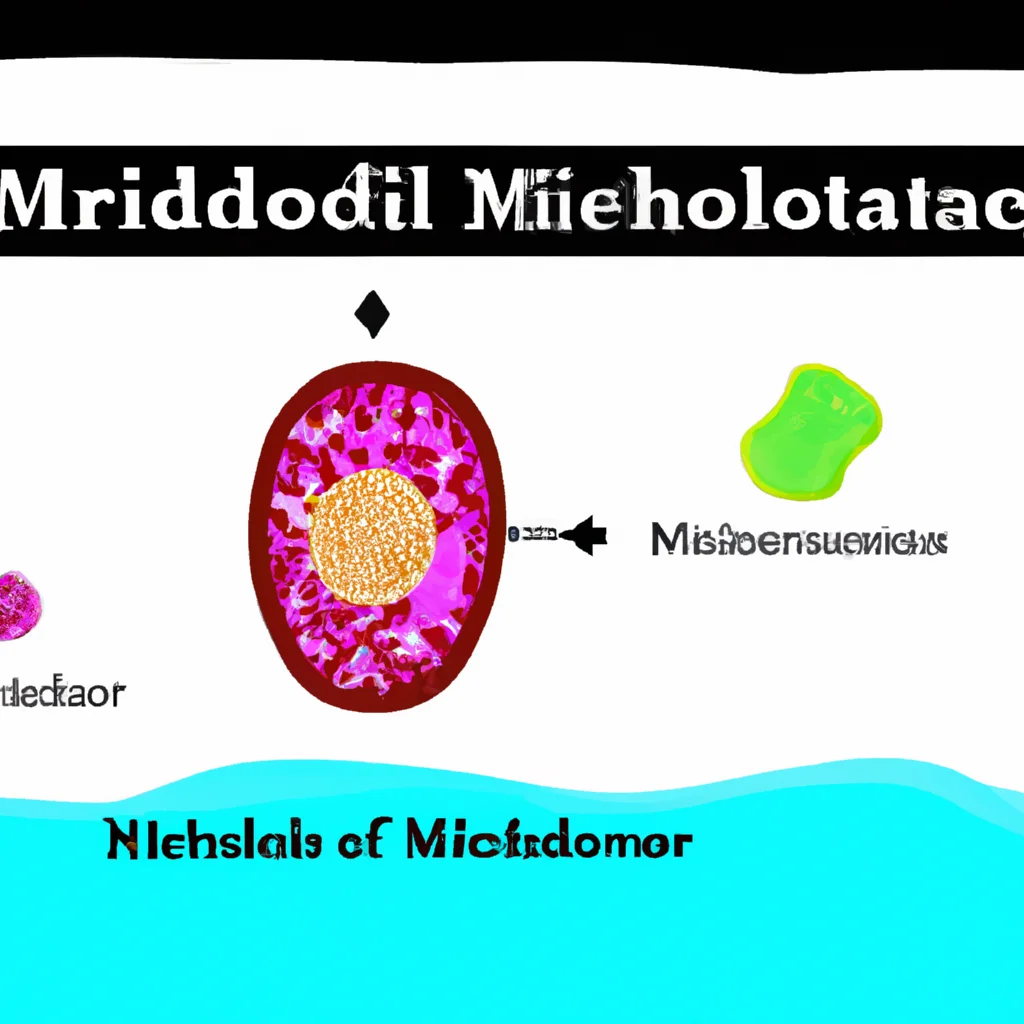What is the role of mitochondria in the cell?


What is the role of mitochondria in the cell?
Mitochondria are organelles found within eukaryotic cells that play a crucial role in cellular energy production. They are often referred to as the “powerhouses” of the cell, as they are responsible for producing the majority of the ATP (adenosine triphosphate) needed for cellular processes. In this article, we will explore the structure and function of mitochondria, their role in cellular respiration, ATP production, and the impact of mitochondrial diseases on human health.
Mitochondria Structure:
Mitochondria are double-membrane-bound organelles that are found in most eukaryotic cells. The outer membrane is smooth and covers the entire organelle, while the inner membrane is folded into numerous cristae. These cristae increase the surface area of the inner membrane and provide more space for the enzymes needed for cellular respiration.
The space between the two membranes is called the intermembrane space, while the space within the inner membrane is known as the matrix. The matrix contains mitochondrial DNA, ribosomes, and enzymes needed for the Krebs cycle.
Mitochondria Function:
The primary function of mitochondria is to produce ATP through cellular respiration. Cellular respiration is the process by which cells convert glucose and oxygen into carbon dioxide, water, and ATP. Mitochondria play a crucial role in this process by providing the enzymes needed for the Krebs cycle and the electron transport chain.
The Krebs cycle, also known as the citric acid cycle, is a series of chemical reactions that take place in the matrix of the mitochondria. During this cycle, pyruvate, a product of glycolysis, is broken down into carbon dioxide, releasing energy that is used to produce ATP.
The electron transport chain is a series of proteins that are located on the inner membrane of the mitochondria. These proteins work together to transfer electrons from one protein to the next, generating a proton gradient that is used to produce ATP.
ATP Production:
ATP is the primary source of energy for cellular processes. Mitochondria produce ATP through two processes: oxidative phosphorylation and substrate-level phosphorylation.
Oxidative phosphorylation is the primary source of ATP production in eukaryotic cells. During this process, electrons from NADH and FADH2 are transferred to the electron transport chain, generating a proton gradient that is used to produce ATP.
Substrate-level phosphorylation is a less efficient way of producing ATP. During this process, ATP is produced by transferring a phosphate group from a substrate to ADP.
Mitochondrial Diseases:
Mitochondrial diseases are a group of rare genetic disorders that affect the function of mitochondria. These diseases can be caused by mutations in mitochondrial DNA or nuclear DNA that affect the production of enzymes needed for cellular respiration.
Symptoms of mitochondrial diseases can include muscle weakness, seizures, developmental delays, and vision and hearing loss. Treatment for mitochondrial diseases is limited, and there is no cure.
In conclusion, mitochondria play a crucial role in cellular energy production. Their complex structure and function allow for the production of ATP through cellular respiration. Mitochondrial diseases can have a significant impact on human health, highlighting the importance of understanding the structure and function of mitochondria in the cell.
Recent Posts
How do I create an engaging and informative online quiz or assessment?
Creating an engaging and informative online quiz or assessment can be a powerful tool for… Read More
What are the most effective methods for managing and reducing work-related stress in the hospitality industry?
Work-related stress is a common issue in the hospitality industry, where employees often face long… Read More
How can I improve my assertiveness and communication skills in a leadership position?
In a leadership position, assertiveness and effective communication skills are crucial for success. Being able… Read More
What are the key elements of a successful employee recognition and rewards program?
Employee recognition and rewards programs play a crucial role in motivating and engaging employees, as… Read More
How do I effectively manage and respond to customer feedback and reviews?
Customer feedback and online reviews play a crucial role in shaping a company's reputation and… Read More
What are the best strategies for effective time management as a stay-at-home parent?
Effective time management is crucial for stay-at-home parents who juggle multiple responsibilities on a daily… Read More